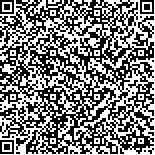下载中心
优秀审稿专家
优秀论文
相关链接
摘要

高分辨率遥感技术为活动断层大比例尺调查提供了高效的技术方法,它可以对活动断层及其控制的构造微地貌进行全面深入的定量研究,分析断层几何形态、结构特征与构造变形,进而明确断层运动学特征及力学机制。然而,遥感技术应用于活动断层与传统遥感地质调查工作区别很大,前者需要建立不同类型的活动断层遥感解译标志,目前该方面仍然缺乏系统性的总结与指导,错误不当的解译标志容易造成对活动断层理解的偏差。为此,系统地分析了高分辨率遥感在活动断层调查应用中的技术现状,特别是与传统遥感地质调查之间的区别与联系。在断层形成力学机制分析的基础上,总结不同断层模式形成的复杂多样的构造微地貌模型及其表现形式,通过对一些活动断裂带上典型地貌特征遥感影像的分析,给出了不同活动断层及相关微地貌的高分辨率遥感识别标志及分析方法。通过大量典型的高分辨率遥感影像特征,建立遥感解译标志、构造微地貌与活动断层之间的关系模型,并强调利用遥感资料分析活动断层时,需考虑不同类型断层形成构造地貌的相似性与叠加性,应根据遥感解译标志对构造地貌模型及其形成的断层力学环境进行综合判定。本文的相关研究可以为中国大陆活动构造探察中遥感技术的应用提供很好的参考。
Seismic hazard is closely related to Holocene active tectonics. A quantitative study of parameters, such as seismic slips, slip rate, and recurrence intervals of the active fault, is significant for scientific earthquake research. High-resolution Remote Sensing (RS) is effective for a large-scale quantitative study of active tectonics. However, many differences exist between active tectonics study and traditional geologic study with the use of RS. We should first establish a series of geomorphic markers to interpret many different active tectonics, which still lack effective guidance and a systematic conclusion.
To direct the effective application of RS in quantitative research of active faults, we conducted several investigations based on RS images. First, the differences and correlations between active tectonic survey and traditional geologic survey, which mostly relies on the interpretation of macrogeomorphology or linear structural features, are discussed based on research developments through high-resolution RS. Second, the mechanisms of different fault models, including strike-slip, normal, and thrust faults, are introduced according to their stress-strain relations among maximum principal stress (Δσxx), intermediate principal stress (Δσyy), and minimum principal stress (Δσzz). The different relationships among the three vectors generate different structural environments and mechanical behavior. Three tectonic geomorphologic models are illustrated and delineated in the paper according to dynamic mechanics with field phenomena. A series of micro-tectonic geomorphogical features is generated by the three fault models.
A series of interpretive markers of different tectonic geomorphologic indices related to the active tectonics is presented based on RS images. We divide the interpretive markers into three groups, namely, geomorphologic markers directly offset by a fault, tectonic geomorphologic markers derived from a fault, and indirect interpretive markers from an image. The first group can be identified directly from offset evidence conserved on the earth surface; it can also be used to determine the fault type and evaluate the offset amount of the fault. The second group can be used to determine the geometrical and kinetic features of the active fault, such as the pressure ridge, seismic bumps, pull-apart basin, and Redel ruptures. The third group is an indirect interpretive marker for the active fault. However, not all phenomena similar to the third group are related to the active fault. Image features of a non-active fault that may be related to human activity, natural erosion, or previous geological evolution are also analyzed in this study. These features may lead to the misinterpretation of active tectonics. Numerous examples of different markers, which are interpreted from important active faults of China, are presented in this study to guide the investigation of active faults. Different correlations among active faults, tectonic micro-geomorphology, interpretive markers, and image features are analyzed according to different cases.
Each of the three fault models can generate many different interpretive markers. However, the three-fault model could also generate similar interpretive markers. In practice, no fault with one pure fault model exists in the field, and the fault usually behaves in superimposed mechanical mechanisms. In addition, the fault may also behave in different fault models in different segments along the fault zone. Therefore, studying an active fault by using interpretive markers is complicated. Field identification of active faults by verifying interpretive markers is necessary to supplement the evidence.
The interpretive markers of different active faults are summarized by high-resolution RS images in this paper. The relational schemas supplied among different active faults, tectonic micro-geomorphology, interpretive markers, and image features are important for a qualitative and quantitative study of active faults. Our study provides beneficial guidelines for research of active faults on the basis of high-resolution RS images.

